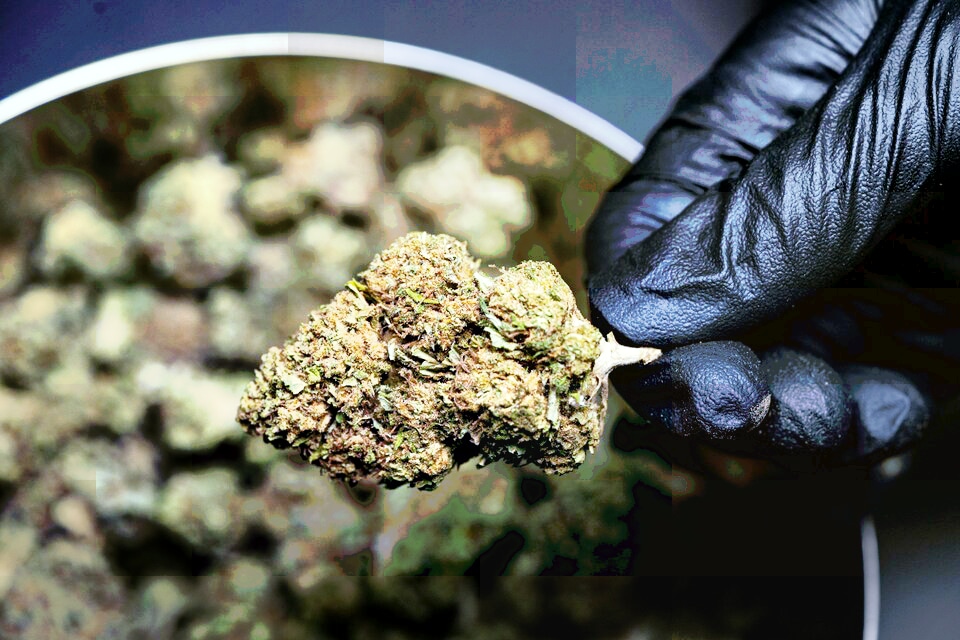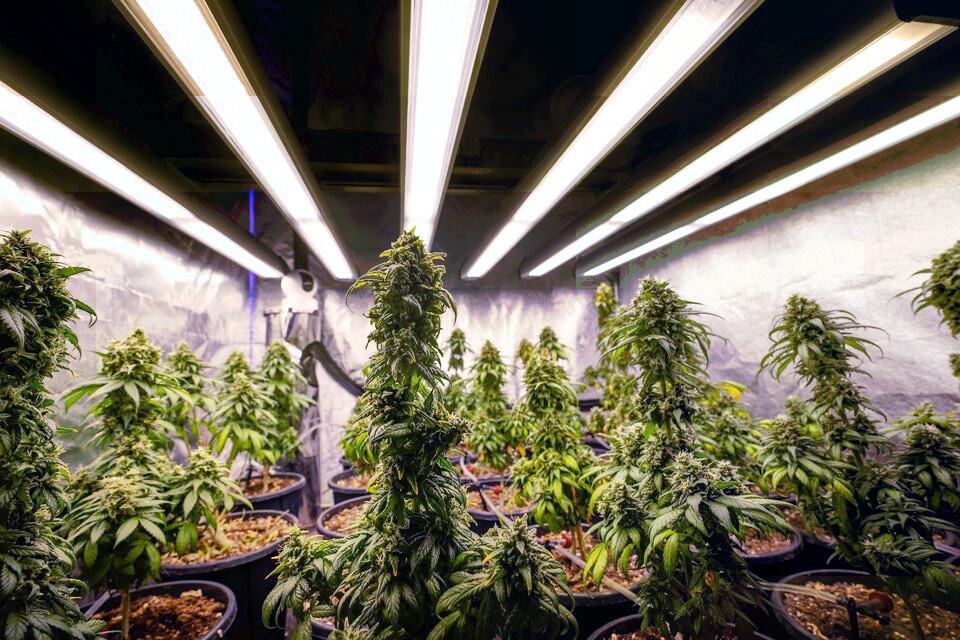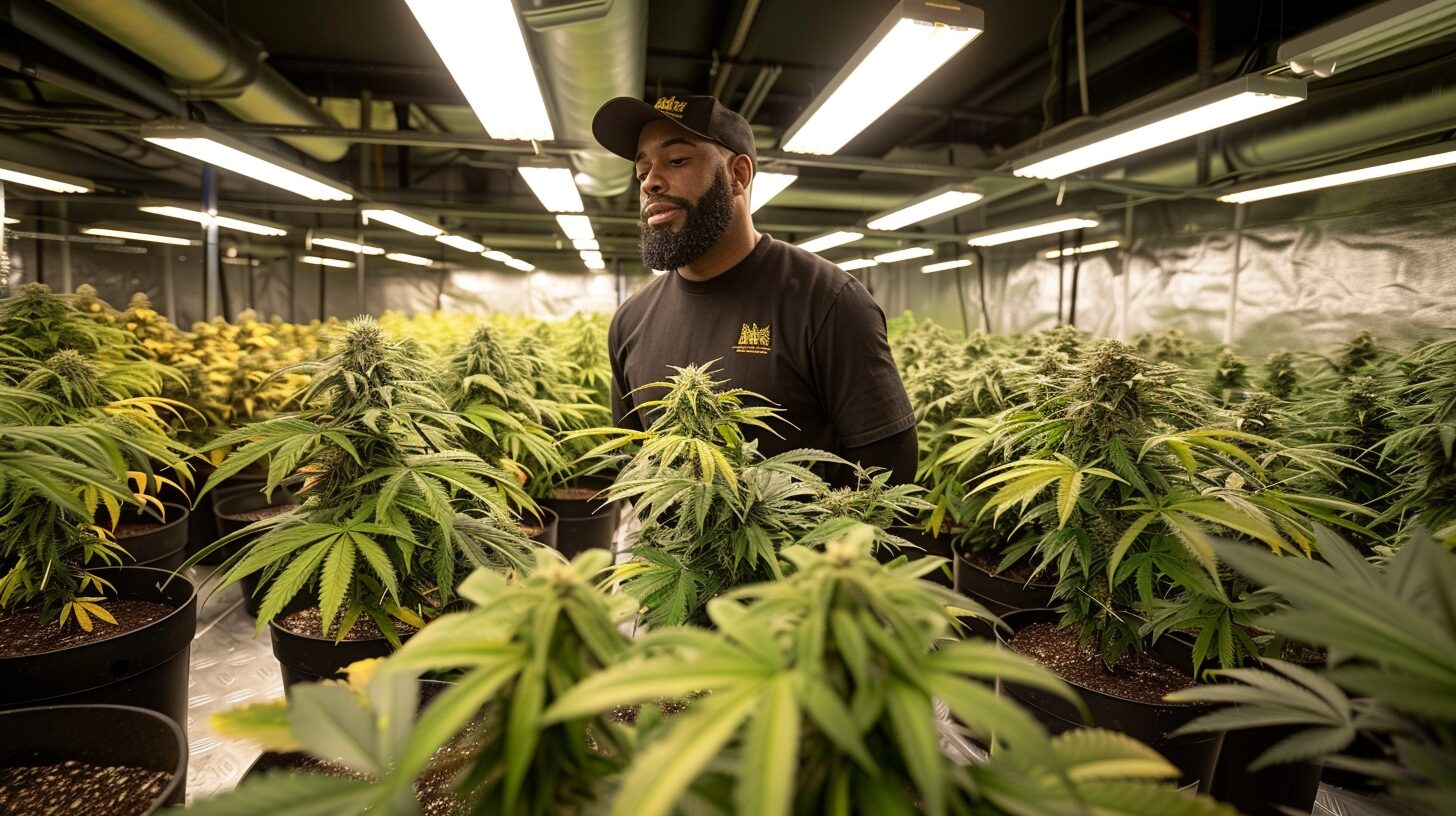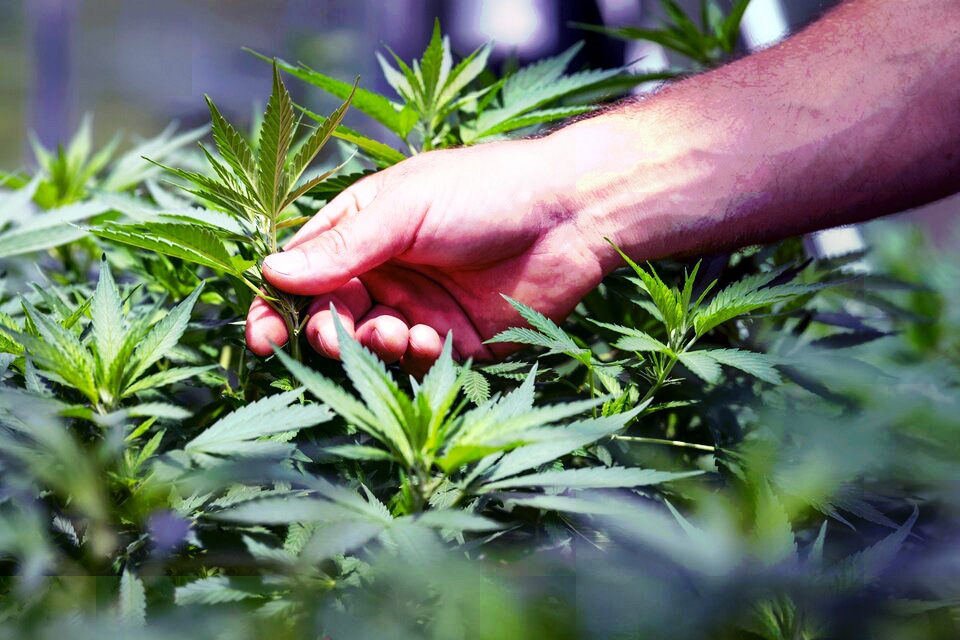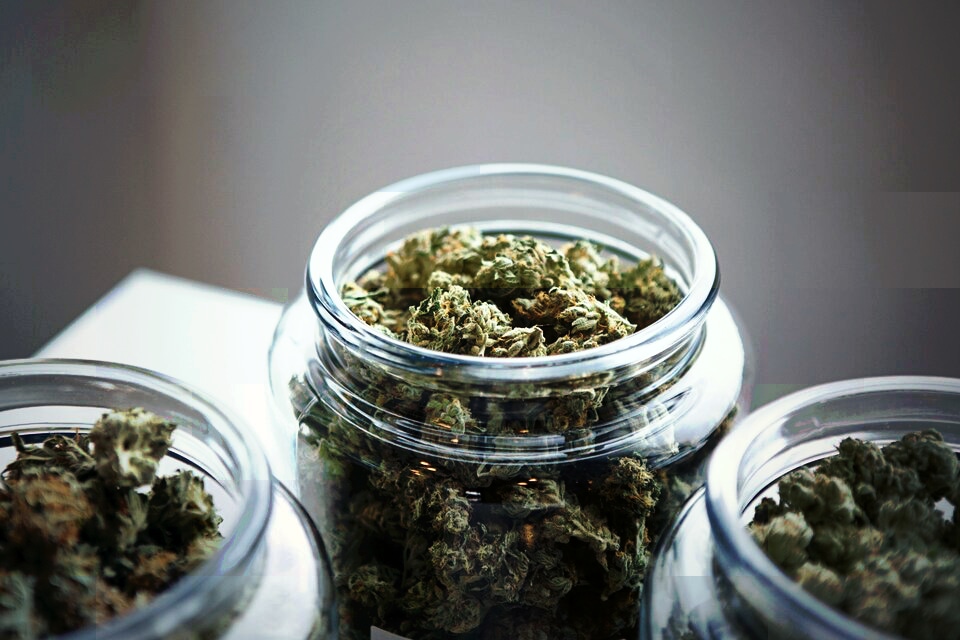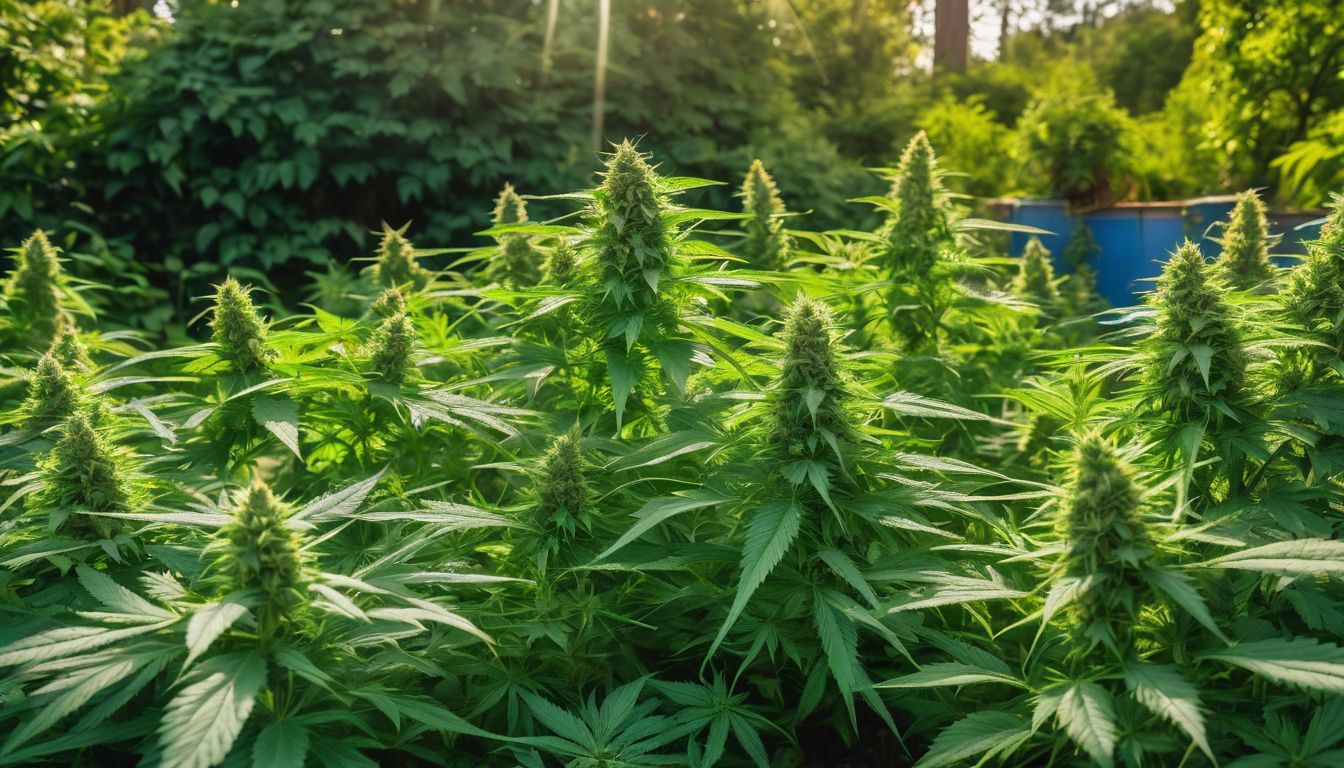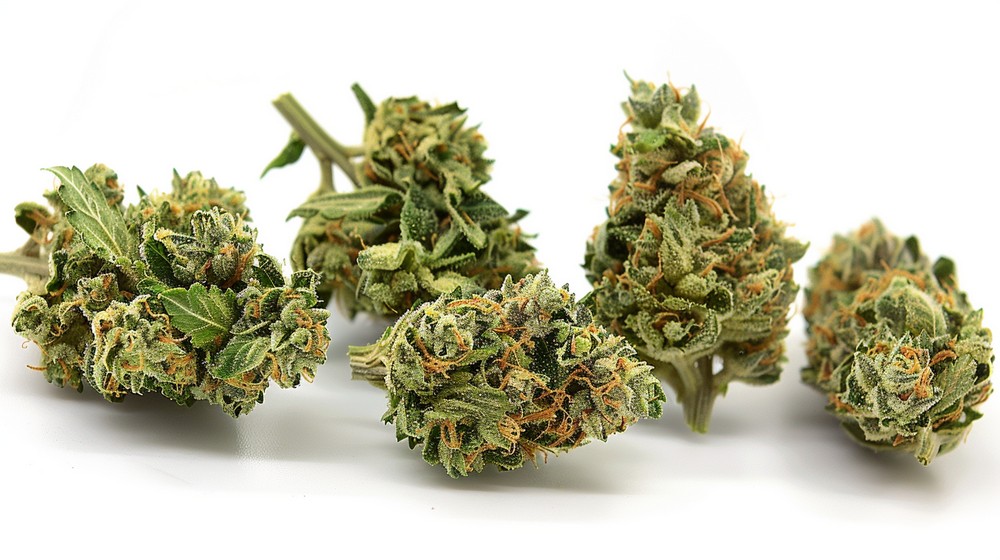Compreendendo o cultivo de cannabis a nível celular
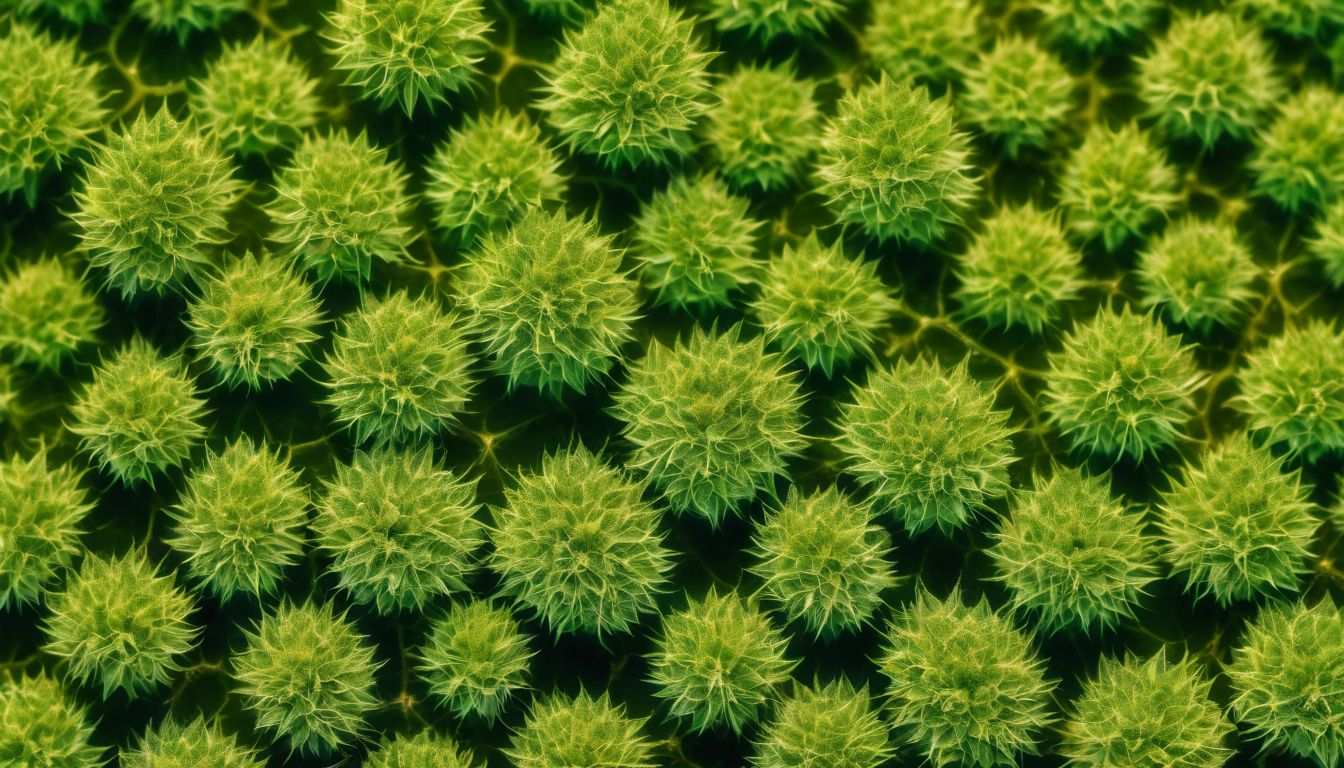
Have you ever wondered how a marijuana seed transforms into a fully developed plant? It turns out that each cell has its own “magic” in the process. In this article, we will dive into the fascinating world of marijuana cultivation, but at a level that not many consider: the cellular level! I will guide you through this amazing adventure from the root to the tip, revealing secrets that are beyond the human eye.
Ready for this unique journey? Let’s go, the spectacle of nature awaits us!
Key Takeaways
- Marijuana cells are like mini factories that work together. They have parts that make food with light, other parts give energy, and some protect and store nutrients.
- The chloroplasts and mitochondria in the cells are very important. Chloroplasts use sunlight to make food, and mitochondria turn that food into energy for the plant.
- Marijuana cultivation depends on a good environment. It needs the right light, temperature, and humidity to grow well.
- The cell membrane controls what goes in and out of the cell, and the nucleus with the DNA directs how the plant should grow and behave.
- Hormones in cannabis cells help tell the plant when to grow and flower, like bosses giving orders.
Understanding Marijuana Growth at the Cellular Level

Put on your scientist hat, because we’re going to dive into the fascinating microscopic world of marijuana cellular growth—and each cell tells its own story! Join me in discovering how the green magic comes to life from the innermost parts of its cells; it’s like spying on nature in its most private laboratory, ready for this adventure?
The Interaction of Cells
Marijuana cells are like little fortresses. They have strong walls that control what can enter or leave. Inside each cell, everything is organized to do its job, just like a well- set-up factory.
Imagine that the cell walls are like security doors. They only let things through that are good for the plant. That’s how cells protect themselves and make sure everything works well.
It’s an impressive team effort!
Different Cellular Structures in Cannabis Plants
After talking about how cells interact, let’s look at the parts of a marijuana cell. Each cannabis plant is made up of many cells that have special jobs.
These cells build strong walls to protect themselves and keep their shape. Inside, the cell membrane controls what goes in and out. The cell juice, or cytoplasm, carries important parts like chloroplasts that help the plant use light to grow.
In addition, we find the powerful mitochondria that give energy to the cell. There are also the endoplasmic reticulum and ribosomes that make proteins, the nucleolus that helps manage genetic information, and the Golgi apparatus that packages and sends things within the cell.
All this work helps the marijuana plant grow strong and healthy.
The “Factory” of the Cell in Marijuana
Inside each cannabis cell hides an impressive “factory”, an interweaving of processes that would be the envy of any industrial engineer. Here, everything has its place and function, working non-stop so that the plant’s growth and production are optimal.
Let’s dive into this microscopic world where the green magic really happens… Get ready to be fascinated!
Factory Building
Each cell in a marijuana plant is like a small factory building. It works hard so that the plant grows strong and healthy. In this “building”, there are special parts that do different jobs.
For example, the cell membrane is like the walls of the building, it protects and keeps everything inside. There, good substances enter and bad ones leave.
Marijuana cells have machinery to make food and energy. Chloroplasts use sunlight to create sugar, it’s like green magic! This sugar gives energy to the plant.
In addition, the cell has a special place called the mitochondria. Here, the plant transforms sugar into energy it can use to grow. Think about it, it’s like having a mini power plant in each cell!
Power Plant
The mitochondria are the true stars in a marijuana plant cell. Think of them as little batteries that keep everything running. They work hard to convert sugar and oxygen into energy the plant can use.
And it’s not just any energy, it’s ATP, which is the currency the cell uses to pay for everything it needs.
It’s fascinating how these mitochondria spend their day creating energy. Without them, the plant couldn’t grow or do all the impressive things it does. Now, imagine this energy production process running at full capacity so the plant is strong and healthy.
Let’s see how all these vital resources are stored in the cells.
Production, Packaging, and Shipping
In the marijuana cell, everything is ready to work hard. As in a factory, important things are produced here. Proteins are like little gifts that the plant needs to grow and be strong.
The endoplasmic reticulum (ER) and the Golgi apparatus are like the hands that assemble and wrap these gifts.
After packaging them, it’s time for the journey. These proteins travel throughout the plant. They go where they are needed, like the stems or roots. And so, the plant can do its job: grow, repair itself, and even defend against what it doesn’t like.
It’s like a delivery team that never rests!
Warehouse
Marijuana cells need to store energy to grow well. The mitochondria do this important job, they are like warehouses full of energy. They store what the plant needs to live and develop.
Think of the mitochondria as batteries that never run out. They are always ready to give power to the cell.
They make sure everything works. This way, the cell can do its job, like building parts of the plant and fixing what’s damaged. Now, imagine all of this as a large company where each part has its unique role.
The next important part of this cellular “company” is management.
Management
After understanding how things are stored in the cell, it’s key to see how these reserves are managed. The management within a marijuana cell is like a big boss who decides when and how to use what’s been stored.
This “boss” must maintain perfect moisture and temperature so that the “grain”, that is, the plant, grows well. It’s similar to caring for barley to make malt.
This control also involves making many copies of the same genetic material, ensuring that the plant can continue creating more sticky substance, the resin. Furthermore, the cellular “managers” monitor the rules of the place where they live.
For example, near a steel factory in Europe they don’t allow marijuana to be grown. So you have to be very clever to direct everything in the cellular world of marijuana.
Factory Collaboration
Just as a good boss needs an incredible team, marijuana cells work together to make everything work. In a plant, each cell has its specialty, but they can’t do their job alone.
They pass materials, signals, and energy as if they were playing a team game. It’s as if the cells were holding hands and saying: “Let’s make the best marijuana!”.
Collaboration doesn’t just happen within one plant, but among many. Growers share tips and tricks to improve their harvests. They use strong mother plants and healthy clones to help other plants grow well.
So, not only does one plant grow, but a bunch of them, thanks to everyone collaborating. It’s like a giant gardening club!
Structure of a Cannabis Plant Cell
When we delve into the microcosm of a cannabis cell, it’s like exploring a miniature city with its own logistics and architecture. Imagine, each cell operating as a small laboratory, where vital processes mix and intertwine for the plant to grow healthy and full of those precious compounds…
Let’s dive into this amazing cellular journey!
Membrane and Cytoplasm
The cell membrane is like the skin of the cell. It keeps everything in place and decides what enters or leaves. The cytoplasm, on the other hand, is like a special gel where everything happens inside the cell.
Imagine the membrane as a vigilant doorman at a nightclub; it only lets friends pass through. The cytoplasm would be like the dance floor, full of people moving and working. Marijuana plant cells use their membrane and cytoplasm to grow strong and healthy.
It’s a party at the cellular level!
Chloroplasts and Mitochondria
The chloroplasts in marijuana cells are like green energy factories. They have a substance called chlorophyll that makes plants green and helps transform sunlight into food.
It’s like magic: light is converted into energy for the plant to grow. Mitochondria are also energy powerhouses, but they work differently. They take the plant’s food and change it into energy the cell can use to live and grow.
Each marijuana cell needs these two parts to be healthy and strong. Without chloroplasts, the plant couldn’t make its food with sunlight. And without mitochondria, it couldn’t use that food to move, build things, or repair itself.
Think of them as two teams in a factory: one creates the product and the other makes sure everything works well using that product. Together, they enable the cannabis plant to grow day by day.
Endoplasmic Reticulum (ER), Ribosomes, Nucleolus, and Golgi Apparatus
The endoplasmic reticulum, or ER, is like a network of highways inside marijuana cells. Proteins and other important molecules travel along these highways. It’s a very busy place.
Ribosomes stick to the ER and make proteins. These proteins are essential for the plant to grow strong and healthy.
Inside the cell’s nucleus is the nucleolus. Here, a special type of RNA is made, which helps the ribosomes work better. And we can’t forget the Golgi apparatus. It works like a post office.
It collects proteins from the ER, puts a “label” on them, and sends them where they need to go. Together, these components are vital in the marijuana cell to keep it growing and producing well.
Vacuoles
Now, let’s move from those protein factories to another super important part of the cell: the vacuoles. Think of them as big bags that store a lot of things. In marijuana plants, these bags are vital.
They have water and nutrients that the plant needs to live. Also, vacuoles collect what the plant doesn’t want, like waste.
But that’s not all. Vacuoles also keep cells firm. When they are full, cells are like inflated balloons and this helps the plant stand upright.
In addition, inside some vacuoles there are pigments that color the leaves and flowers. Imagine how pretty that looks. Knowing vacuoles well helps us take better care of our cannabis plants and make them grow strong and healthy.
Nucleus and DNA
The nucleus is like the brain of the marijuana plant cell. This is where the DNA is stored, the code that tells the plant how to grow and behave. This DNA is very important because it has the instructions to make cannabinoids like THC and CBD.
Each cannabis plant is unique because of its DNA, which decides if it will be bigger, stronger, or have more THC.
Cells use DNA to pass on information to new plants. Think of the nucleus as a library full of recipes for each part of the plant. These recipes help plants grow well and be strong.
When growers know the nucleus and DNA well, they can make new varieties of marijuana with special characteristics. It’s like cooking a new dish, but for plants!
Hormones
Hormones are like the bosses of a factory in cannabis cells. They send signals to tell the plant how and when to grow or flower. For example, gibberellins are hormones that give the plant a push to start making flowers.
They’re like the boss who says, “Time to work!”.
Then there’s abscisic acid, which is another type of hormone. It can change how the plant grows and develops at a very small level, within its cells. Imagine it’s like having a supervisor who helps you adjust your pace; not too fast, not too slow, just perfect for the plant to be healthy and strong.
Substance Production in the Cell
In the fascinating cellular world of our cannabis plant friends, each cell is like a small chemical laboratory, working tirelessly to produce substances that not only make them grow, but also gift us with those compounds that spark so much interest…
And I assure you, once you know how all those cannabinoid and terpenoid juices are cooked up at the cellular level, you’ll see your buds with new eyes!
The Vacuole and the Nucleus
In marijuana plant cells, the vacuole is like a big warehouse. It stores things like water, food, and waste. It’s super important because it helps the plant stay firm and grow well.
Now, the nucleus, that’s the boss. It has all the genetic information, which is like an instruction book to make the plant strong and healthy.
The vacuole and the nucleus work together like a dream team. Imagine the vacuole prepares the materials and the nucleus says how to use them so everything comes out perfect. That’s how substances that make each marijuana plant unique are produced.
And if you’re thinking about tissue culture or greenhouses, well, they’re still stars there too. Let’s keep talking about how these cells make magic together.
Cooperation Between Cells
The cells in marijuana plants work together like a team. Imagine that each cell is a person in a big factory. Each one has its special job. Some make food for the plant using sunlight.
Others carry this food to different parts of the plant so it grows strong and healthy.
In this team, there are very important cells called root cells. They drink water and nutrients from the soil. Then, these cells pass what they collect to other cells to help the whole plant.
It’s as if the root cells were the foundation of a building, keeping everything steady. Without cooperation, marijuana couldn’t grow well or make those substances that affect the brain, like THC.
Cannabis Cultivation Techniques
Although we may think that growing cannabis is simply planting and waiting, the reality is that each cultivation technique unravels a universe of cellular secrets that we will address here…
Keep reading to discover them!
Basic Cultivation
Basic marijuana cultivation starts with good foundations. Plants need soil, water, light, and care to grow.
- Choose good soil: marijuana needs nutrient-rich soil. Make sure it has good drainage.
- Use seeds or clones: you can start with seeds or use parts of another plant for clones. Both methods work well.
- Add water correctly: cannabis plants should not have too much or too little water. Water when the soil is dry to the touch.
- Proper light is key: if you’re growing indoors, artificial lights are necessary. Outside, find a spot with plenty of sun.
- Control temperature: marijuana likes warm climates but not too hot. Keep the growing area at an ideal temperature.
- Choose the best environment: decide if you’re going to grow indoors or outdoors. Each option has its advantages.
- Monitor soil pH: a pH between 6 and 7 is perfect for plant roots. Check regularly and adjust if needed.
Growing Environment
After learning about the fundamentals, it’s key to think about where the marijuana will grow. A good growing environment is like a comfortable home for the plants. Here, they should have the right light, temperature, and humidity.
Light helps the leaves make the food the plant needs. With the right temperature, not too hot or too cold, plants can grow strong.
Humidity is also important. If there’s too much or too little water in the air, the plants won’t be happy. That’s why you need to control the air carefully. Plants need fresh air to breathe and for their leaves to move freely.
So remember, the place where your plants live has to be perfect for them. This ensures that your little plants can grow healthy and give us their best.
Indoor Cultivation
Indoor marijuana cultivation is like having a secret garden inside your home. Here, you control everything so the plant grows strong and healthy.
- A good spot in the home is selected, making sure it’s discreet and has enough space.
- Special lights are installed because plants need a lot of light to grow.
- The place must be kept at the right temperature; not too cold, not too hot.
- Ventilation is used so fresh air circulates and plants breathe better.
- Pots or containers should be the right size for each plant’s roots.
- The soil is prepared with nutrients or a hydroponic system is installed to feed plants without soil.
- It’s important to water plants regularly but not overdo it to avoid drowning them.
- Growers prune the plants, cutting unnecessary parts to improve their shape and health.
- They control pests and diseases carefully to not harm the plant or use bad chemicals.
Outdoor Cultivation
Growing marijuana outdoors is an art. Nature provides everything necessary for the plant to thrive.
- Finding the perfect spot is key. Look for a site that receives lots of direct sunlight, as important fact 1 teaches.
- The soil should be rich and well-drained. Add compost and nutrients to make your plants strong.
- Water wisely. Too much can drown the roots, and too little will leave your plants thirsty.
- Watch the weather. Protect your plants from extreme temperatures and strong storms.
- Think about bugs and pests. Use natural or safe methods to keep harmful insects at bay.
- Prune to promote health. Removing dead leaves helps the plant breathe better and grow healthier.
- Give your plants space. If they’re too close together, they’ll struggle for resources and could get sick.
- Plants need friends. Grow other species nearby to increase biodiversity and protect your cannabis.
- Be patient with the growth process. From seed germination to harvest, each step takes time.
- Harvest at the right moment. This ensures the flowers have the best possible quality.
Plant Problems
Marijuana plants can have problems during their growth. These issues affect how they develop and the quality of their fruits. Now, let’s talk about common problems:
- Pests and diseases: Bugs like mites and aphids attack plants. Diseases like fungi are also a danger.
- Water issues: Too much water can drown the roots. Too little water makes the plant dry out.
- Incorrect light: Marijuana needs light to grow well. If it has too little, or too much of the wrong kind, it can have problems.
- Inadequate nutrients: Each plant needs good food to be strong. If it doesn’t get the right nutrients, the plant won’t grow well.
- Temperature and humidity: If it’s too hot or cold, or if there’s too much or too little humidity, this can harm the plants.
Growth Stages of the Cannabis Plant
From germination to flowering, each stage of the cannabis plant’s journey is a fascinating mystery at the cellular level that we are still unraveling; keep reading to immerse yourself in the secrets of the growth of these green friends…
You won’t want to miss what comes next!
Water and Nutrients
Marijuana plants drink a lot of water. Without it, they can’t carry the nutrients they need from the soil to their cells. Think of water as a train—the nutrients go up and travel to every corner of the plant.
And not just any nutrients, cannabis plants want the “macronutrients” like nitrogen, phosphorus, and potassium. These are like the favorite food that helps plants grow big and strong.
But be careful, it’s not just about throwing water and that’s it. Roots are also key here. They act as the plant’s mouths, sucking up all the good stuff from the soil or from special solutions if your marijuana is in hydro or aero.
With strong roots and the right water, these plants are ready to make green magic.
Traditional Cultivation vs Cellular Level Cultivation
The world of marijuana cultivation is evolving, and with new cellular level techniques, it’s like comparing the game of Monopoly to genetic engineering! While one is based on classic methods, with its natural times and rhythms, the other dives headfirst into a laboratory, where each cell is a universe and every detail matters… Can you imagine? Let’s enter this green revolution to discover what makes these two forms of cultivation clash in a pitched battle for efficiency and quality!
Cultivation with Seeds and Clones
Growing marijuana can be exciting. Starting with seeds is like opening a present, you never know what surprise plant you’re going to get. Seeds can give many different plants and that’s great for finding the best one.
But, of course, there are also clones. With them, you know exactly what to expect because they’re like copies of a mother plant. This is perfect if you already have a plant you love and want more just like it.
Here’s an interesting fact: experts advise studying plants born from seeds to choose the best ones. That way, you get top-notch marijuana and ensure a harvest that makes you smile.
Use clones if you’re looking to repeat that winning result. Make every sprout count and soon you’ll have a garden full of your favorites. Let’s get to work!
Cultivation in Liquid Media
Marijuana cultivation in liquid media is becoming more and more trendy. This form of cultivation allows experts to have more control over how plants grow. Imagine, it’s like having a superpower to decide exactly what nutrients and how much water each plant receives.
This means you can improve the amount of THC, CBD, and other important components.
Using liquids instead of soil for the roots makes it possible to quickly change what you give the plant. So, if you notice something isn’t right, boom! You change the mix and the plants are happy again.
Moreover, with this method you can avoid some typical problems of soil cultivation. And here’s the interesting part: you can even influence whether more male or female plants are born.
Now that’s being in control of cellular cultivation!
Considerations on Greenhouse Marijuana Cultivation
Growing marijuana in a greenhouse is great because it works for many plants at once. But you have to think carefully, especially when we use seeds. Sometimes, half of the plants are males and aren’t useful for what we want.
It’s also important to know the phases of the plant, like when it starts to grow and needs more care.
In a greenhouse, you can control everything better, like light and heat. This helps marijuana plants become stronger and have more of what people look for in them.
You also have to plan how you’re going to use your plants to make money. This means thinking about all the stages from when the seed starts to sprout until the leaves are ready.
Conclusion
Understanding how marijuana grows from cells is like being a detective in a very small world. Each part of the cell works hard so that the plant is strong and healthy. By learning about this, we can make plants grow better and even find ways for them to help us more.
It’s amazing to think about everything that happens inside a small cell so that in the end we have a marijuana plant! It’s a whole universe within another.
To get more information on how to maximize yield and quality in your cannabis crops, visit our complete guide here\.
Frequently Asked Questions
1. What is the cell membrane in marijuana cultivation?
The cell membrane is like a barrier that protects marijuana cells. It helps control what goes in and out of the cell so the plant grows well.
2. Why are plant hormones important in marijuana?
Plant hormones are super important because they’re like secret messages that tell the plant how and when to grow, especially in root cells.

